Science Daily News | 22 Jun 2023

Views (137)
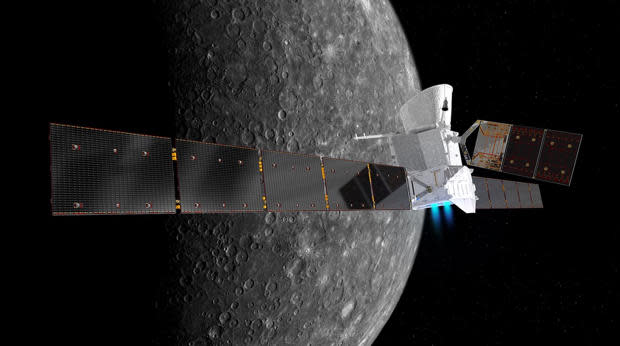
Water voles released at new wetland site near Bristol
Ecologists hope the initiative will boost the species' declining numbers and help biodiversity.
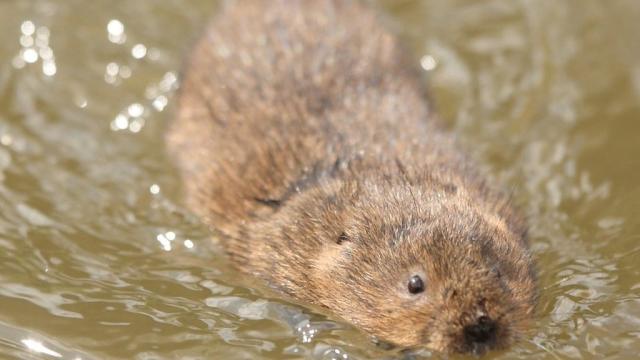
Water voles have been released into a newly created wetland near Bristol in a bid to boost biodiversity.
The site at Hallen, south Gloucestershire, is part of a major project to strengthen flood defences along the Severn Estuary.
Eighty hectares of wetland have been incorporated into the Avonmouth Severnside Enterprise Area (ASEA).
Water voles are among the most endangered species in the UK but are a vital part of river ecosystems.
Their burrowing and feeding create conditions needed for a host of other animals and plants to thrive, say experts.
They have now disappeared from around 90% of places where they were once prevalent, according to the Wildlife Trusts, because of habitat loss and pollution.
The creatures are also heavily preyed upon by American mink, an invasive species originally brought to the UK for fur farming.
Before the 12 water voles moved into their new home in April, conservationists checked the area was free of the predators.
The team also checked ditches for resident water voles to avoid any competition with the newcomers.
All new arrivals were put in pens with straw and food on the first day to give them time to get used to their surroundings.
On the second day the pen was opened, with its entrance heaped with reeds to enable the voles to go in and out.
Follow-up surveys to monitor their progress will be carried out in coming months.
The ASEA project is being built in partnership between South Gloucestershire Council, Bristol City Council and the Environment Agency.
As well as the new wetlands, concrete walls and flood gates are being constructed to protect 2,500 homes against rising sea levels.
Councillor Kye Dudd, city council cabinet member for climate, ecology, waste and energy, said: "I'm pleased we can play a part in helping [the water vole] population grow.
"We're committed to enhancing our natural environment and providing a huge boost to nature and wildlife projects such as this."
Councillor Louise Harris, South Gloucestershire's cabinet member for climate and nature emergency, said: "We want to protect and boost nature through our climate and nature emergency work and, as part of this ecology mitigation and flood defence project, we are ensuring that a thriving environment will be established for people and wildlife."
NASA astronaut Leland Melvin talks Black history, education and dogs (exclusive)
Retired NASA astronaut Leland Melvin (with his 2 dogs) talked with Space.com about his latest course for kids, and the in-space educational event he once did celebrating Black history.
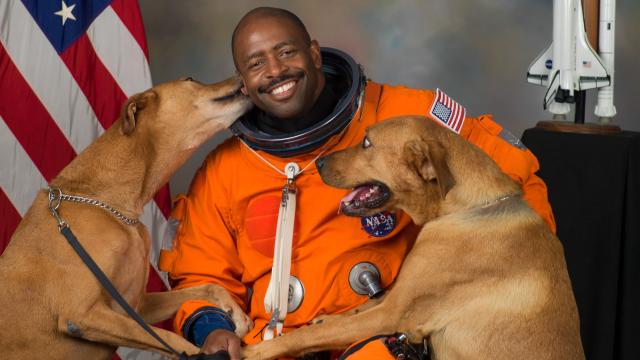
Retired NASA astronaut Leland Melvin says he still loves working with kids to explore the final frontier.
"We get all these kids coming on to watch and listen about space and science, and some of them are going to be that next generation of explorers. It's very exciting," said Melvin, emphasizing the free price point allows all kinds of kids to participate.
One of Melvin's space education highlights was participating in a broadcast in 2009 with journalist Tom Joyner, who is Black, to commemorate the first two Black men flying in space on the same mission: Melvin, and NASA astronaut Robert Satcher.
"There were these people on the ground that were stopping their cars to have their kids listen to this, because they were talking about history," Melvin said of the broadcast.
"After we had that event, I remember getting back home. People sought me out to tell me that they're going to go into aerospace engineering, they're going to go into this, because they heard that."
Related stories:
Melvin emphasized that regardless of educational background and privilege, kids (or kids at heart) still have the ability to use curiosity and other skills to critically use science in all they do. It's something he still tries to use in his own life.
"I am much older than most of the kids we teach," Melvin joked, "but I'm still having fun riding my bicycle, playing with my dogs, being curious, looking at the night sky. [When] seeing the space station going overhead I'm wondering, 'what's going at 17,500 miles per hour?'"
Melvin added that in a world full of complexity, the scientific method teaches us to "be curious to solve problems, and build things, and create things."
Climate change hits Antarctica hard, sparking concerns about irreversible tipping points
The extent of sea ice surrounding Antarctica has fallen to a historic minimum this year, triggering concerns that the pristine polar continent might be reaching a climate change tipping point.
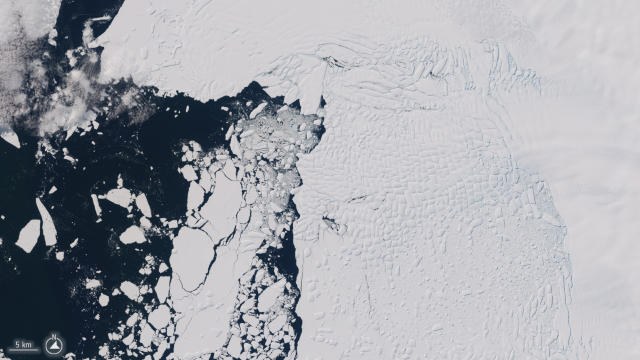
Antarctica may be in serious trouble. Satellite images show that the amount of sea ice floating around the pristine polar continent remains far below long-term averages despite the south polar region moving into its peak winter period.
"In the Arctic, we have seen a steady decline [of sea ice] over time," Peter Fretwell, a remote-sensing scientist at the BAS, told Space.com. "Antarctica, up until 2016, was steady, even getting more sea ice, which we couldn't understand. But since 2016, it's gone down, and it's going down even more at the moment. Something has happened, and it's gone down suddenly very much."
The problem is, as Fretwell said, that "what happens to Antarctica doesn't just stay in Antarctica." The warming polar seas affect weather patterns all over the world and accelerate the melting of Antarctic glaciers that, in turn, will lead to faster sea level rise around the globe.
"Climate change is affecting the polar regions faster than anywhere else in the world. They're really at the frontline of climate change," Fretwell said. "But we know that sea ice drives deep water currents around the world, and it has consequences around the world."
The three consecutive years of unprecedented sea ice loss also bode ill for many of the continent's species that are unlikely to survive anywhere else. Fretwell and his team are currently scouring satellite images for evidence of the impacts on populations of animals that are known to rely on sea ice for breeding.
Previous studies have shown that the Thwaites Ice Shelf, a stable floating mass of ice that protects the continental glacier, may completely collapse by the early 2030s, a process that might accelerate if the current trend of vanishing sea ice continues. But Fretwell thinks that all is not lost yet.
Related stories:
"There is still time to stop this oil tanker of climate change," Fretwell said. "But there is not much time. We now have decades of warming oceans and warming temperatures wired into the system, so if we stop putting carbon in the atmosphere, the world will still continue to heat for decades to come."
"With tipping points, you never know whether you've come past one," Fretwell said. Sea ice levels "might come back, but right now, we are in a horrible state of wondering whether it's going to come back or continue on this track."
Factbox-Extreme tourism allows ultra-wealthy to explore new frontiers
A three-way competition between billionaire entrepreneurs Jeff Bezos, Elon Musk, and Richard Branson has spurred the development of a nascent astro-tourism industry. Branson's Virgin Galactic Holdings said last week its first commercial spaceflight, called "Galactic 01", would launch between June 27 and June 30. Since June 2021, when the first seat was sold for $28 million, Bezos' space tourism venture Blue Origin has offered 10-minute flights to an altitude of about 350,000 feet (106 km), where passengers experience a few moments of weightlessness before descending back to Earth.
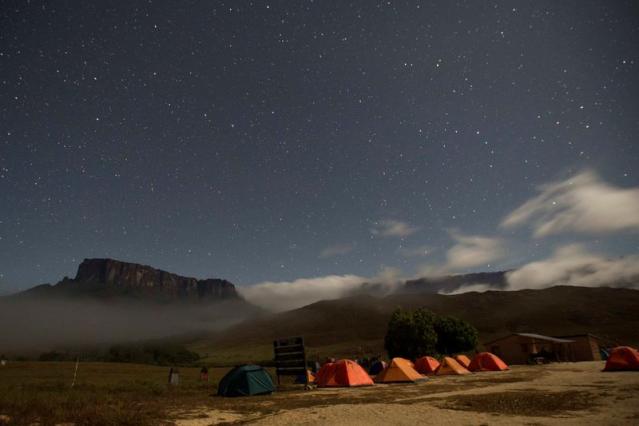
(Reuters) - The $250,000-a-head expedition that vanished this week en route to the deep-sea wreck of the Titanic ocean liner is just one example of extreme tourism that is becoming more commonplace for those who can afford it.
From Earth's tallest peaks to suborbital space, here are some of the other exploits that can be attempted:
SPACE TRAVEL
A three-way competition between billionaire entrepreneurs Jeff Bezos, Elon Musk, and Richard Branson has spurred the development of a nascent astro-tourism industry.
Branson's Virgin Galactic Holdings said last week its first commercial spaceflight, called "Galactic 01", would launch between June 27 and June 30. The company has a reported backlog of 800 customers for the roughly 90-minute up-and-back flights, most of whom have paid between $250,000 and $400,000 for their tickets.
Since June 2021, when the first seat was sold for $28 million, Bezos' space tourism venture Blue Origin has offered 10-minute flights to an altitude of about 350,000 feet (106 km), where passengers experience a few moments of weightlessness before descending back to Earth.
A Japanese billionaire has already bought every seat on the maiden voyage of Musk's SpaceX Starship rocket, which is intended to spend three days circling the moon and come within 200 kilometers of the lunar surface. Initially scheduled for 2023, the flight has been delayed by failed tests of the vehicle.
EARTH-BOUND EXPEDITIONS
Meanwhile, on Earth, rich tourists disinclined to make grueling treks through some of the planet's toughest terrain can fly overhead or book private helicopters instead.
Before he set his sights on space, Branson was one of an elite group of extreme hot-air balloon travelers, becoming the first to traverse the Pacific Ocean in a balloon in 1991. Other wealthy individuals have set more distance, height, and duration records in the past few decades.
Heli-skiing services have launched in the snowy Himalayan mountains of Indian Kashmir, between India and Pakistan, during lulls in violence between Muslim separatists and the New Delhi government.
Mount Roraima, a mystic, flat-topped mountain on the Venezuela-Brazil border that inspired Arthur Conan Doyle's 1912 "The Lost World" novel and was once only accessible to the Pemon indigenous people, now attracts thousands of hikers each year - and a few visitors who arrive at the top via helicopter.
(Reporting by Julia Harte; editing by Donna Bryson and Rosalba O'Brien)
Leicester Cathedral peregrine rescued after getting stuck on ground
The bird flew the nest at Leicester Cathedral but was not strong enough to get off the ground.
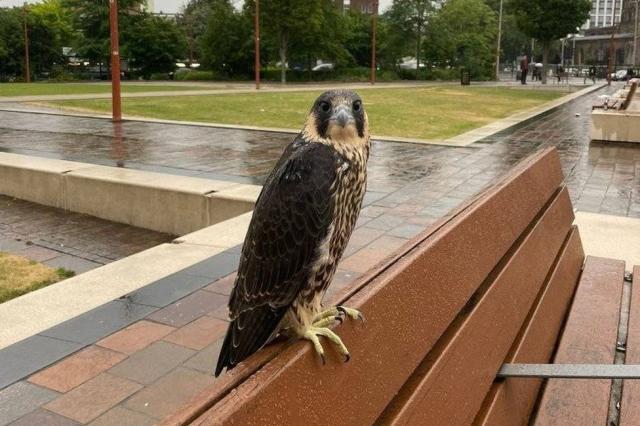
A young peregrine falcon needed a helping hand after flying the nest and getting stuck in a city centre square.
The fledgling was one of three that hatched on a nesting platform at Leicester Cathedral seven weeks ago.
She flew to the ground but was not strong enough to fly back up, so members of Leicestershire and Rutland Ornithological Society took her home.
They said she could have died if left on the ground, as many fledglings were run over.
"The urge to fly is very, very strong, but sometimes they leave too early, before the wings are strong enough to give them enough lift to get off the ground," said Jim Graham, who runs the peregrine project for Leicester Cathedral.
"Unfortunately they get hit by cars and buses and things like that. It's quite a dangerous place."
He said the bird had been attracting a lot of attention while perched on a bench in nearby Jubilee Square, where she was for about three hours on Tuesday morning.
"They are absolutely beautiful animals and it's nice that people were giving her due respect," said Mr Graham.
He put her in a bag in order to stop her panicking while she was carried home.
"We managed to get her caught, which was a little bit easier than anticipated, and we put her back into the box and she has been fed by one of the adults," he said.
The peregrine's brother had fledged on Friday but became grounded in Cheapside, so he also had to be returned to the nesting platform.
"He fledged again on Sunday and hopefully that's been a good fledging, because we haven't had any communication to say he has been found somewhere on the ground," said Mr Graham.
"They don't always return to their nest. If they are capable of good flight they find a nice flat roof, the adults continue to feed them, and they teach them to hunt themselves."
The Leicester Peregrine Project has monitored the habits and activities of the birds of prey in Leicester city centre since 2014.
Probe captures stunning up-close views of Mercury's landscape
A series of images taken by two satellites flying past Mercury captured multiple "tectonic and volcanic curiosities."

A series of images taken by two satellites flying past Mercury captured multiple "tectonic and volcanic curiosities" as well as an impact crater on the planet.
The satellites, jointly named the BepiColombo mission, are operated by the European Space Agency and the Japan Aerospace Exploration Agency.
The black-and-white photos released by the agencies show multiple features, including the crater. The crater, newly named for Jamaican artist Edna Manley, is about 218 kilometers (135 miles) wide. Scientists found the crater to be of special interest because there appears to be "dark 'low reflectance material'" that researchers said in a news release might be remnants of the planet's early carbon-rich crust.
The basin of the crater has been flooded with smooth lava, which researchers said is "demonstrative of Mercury's prolonged history of volcanic activity."
BepiColombo will continue monitoring the crater from orbit, measuring the carbon in the area and the minerals that may be inside it.
Two images taken closer to the planet show "one of the most spectacular geological thrust systems" on Mercury. The area is a "lobate scarp," a tectonic feature that researchers believe is formed by the planet cooling and contracting. As a result, the area looks wrinkled. There are also features in the area that have been flooded with volcanic lava.
"This is an incredible region for studying Mercury's tectonic history," says Valentina Galluzzi of Italy's National Institute for Astrophysics in the news release announcing the photos. "The complex interplay between these escarpments shows us that as the planet cooled and contracted it caused the surface crust to slip and slide, creating a variety of curious features that we will follow up in more detail once in orbit."
The mission will complete another flyby of Mercury in September 2024, researchers said.
0 Likes
